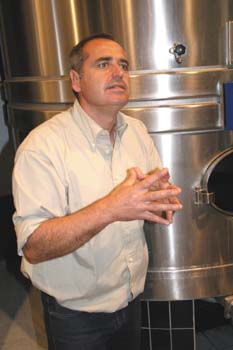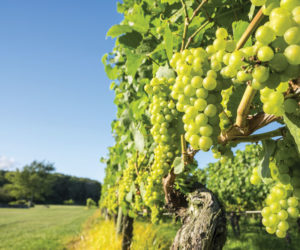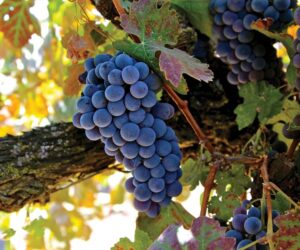With the holidays upon us, flutes will be filled with bubbly to make seasonal celebrations extra special. No sparkling wine holds the tradition and history as its iconic namesake: Champagne. The Champagne region of France’s chalky soil, climate and strict regulations have set the standard against which all other sparkling wines are judged. Only three grape varieties — Pinot Noir, Chardonnay and Pinot Meunier — can be used to make Champagne. The diversity of styles produced from these three grapes is an expression of time-honored techniques and tradition that makes Champagne truly unique.

We have the ability to pick the best fruit from the 3,361 acres of the Moët et Chandon vineyards for Dom Pérignon, which is the key to the final result in the glass. To me pH is the most important aspect of the fruit we pick. I think there is too much emphasis among Champagne makers on acidity. In my mind pH is at the top with acidity, flavors and sugars further down the scale of importance. If we need to do any corrections, I prefer we do so through blending.
We add a small dose of sulfite at the time of pressing to stabilize the must and kill any existing yeast. We use a cultured house strain of yeast for primary fermentation and a different house strain for the secondary fermentation. I simply wouldn’t risk using an indigenous yeast at any point in the process. With our strains we know how they will perform during fermentation so we can better control the outcome.
Our primary fermentation is completely in stainless steel. I’m often asked about the use of oak with our wine since one of the signature flavors of Dom Pérignon is a toasty, almost smoky quality. This flavor just comes through aging and not through any use of wood during fermentation or aging. Unlike some other Champagne houses, I don’t want to use barrels. We inoculate with a malolactic fermentation culture and allow it to complete fully — this usually takes place in October each year. In November and December we have three rounds of tasting to determine possible blends.
You need to blend to achieve a seamless quality in your Champagne. I tend to use roughly a 50% Chardonnay and 50% Pinot Noir blending guideline for Dom Pérignon, although some years it can be 60:40 or 40:60, depending on the needs of the vintage to achieve our signature experience. There are three grapes we are allowed to use for Champagne, but blending across the two is what we do here. It is tougher to just rely on the two varieties but I feel the tension between these two grapes can ultimately be more rewarding.
The front and middle of tasting Dom Pérignon comes from the Chardonnay while the second part of the middle and finish belong to Pinot Noir. One thing we are very serious about is doing whatever we can to limit the long-term aging impact of oxidation. Oxidation kills a Champagne’s complexity and makes it fat and heavy. However, we do not baby the must early on before adding the yeast. Oxygen is not a bad thing at the early stage and I think it acclimates the juice later against future oxygen pick-up. At later stages, we gently rack and protect with sulfite at key times such as disgorging.
Overall we do whatever we can with our techniques to strike a balance between complexity and intensity. In this effort, we produce a unique Champagne that can hold up over decades of aging.

As a winegrower and winemaker, I take a hands-on and hands-off approach to creating my Champagnes. Champagne can only be made from the three designated grape varieties: Pinot Meunier, Chardonnay and Pinot Noir. We grow all three here in our chalk and clay soil (40% Pinot Meunier, 30% Pinot Noir, 30% Chardonnay).
My hands-on approach comes to the vineyard. We carefully work the vineyard with low-trellising and dense planting (not more than 2.5 meters or 8.2 feet between vines and rows) to help protect the grapes against the colder temperatures here. Our vines tend to be on the older side for this region (on average about 38 years old). I feel this brings extra intensity to the fruit. We limit yields with pruning, allowing only 10 fruiting buds to be kept. Debudding is also sometimes used to further concentrate flavors in the remaining bunches.
We try to be as natural as possible in the vineyard by limiting chemicals. We work the ground instead of using weed killers and control parasites with pheromones to disrupt insect breeding patterns. We hand pick all our grapes and make it a rule to press grapes within 10 minutes of being picked to retain their character. We separate out all of our press runs by location and variety of grape and ferment those separately.
The hands-off approach comes to my philosophy of fermentation. I only use natural yeasts, not selected ones, for my primary fermentation. I feel this more accurately allows the soil to express itself in my wines. I keep temperatures low for primary fermentation so that it lasts for a month. I feel this allows for fuller flavors to develop. I also only allow malolactic fermentation to take place if the year warrants that approach.




